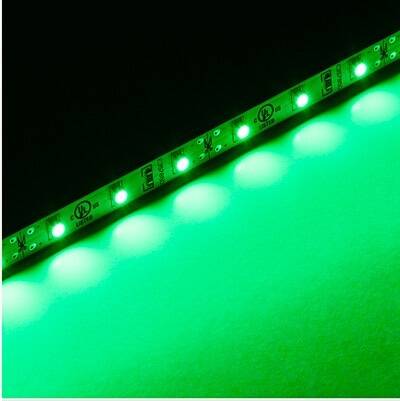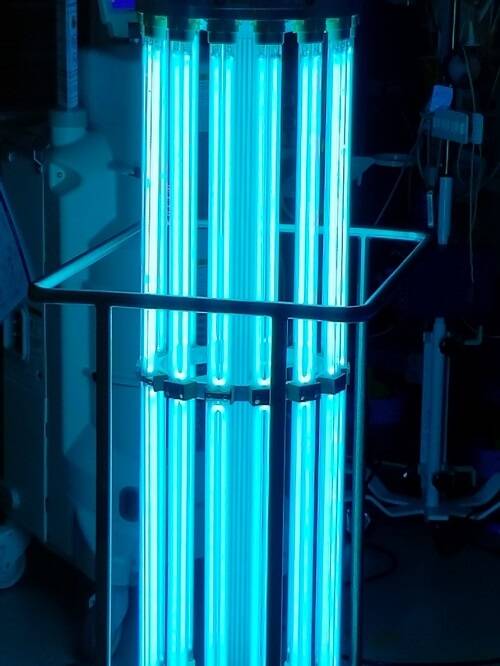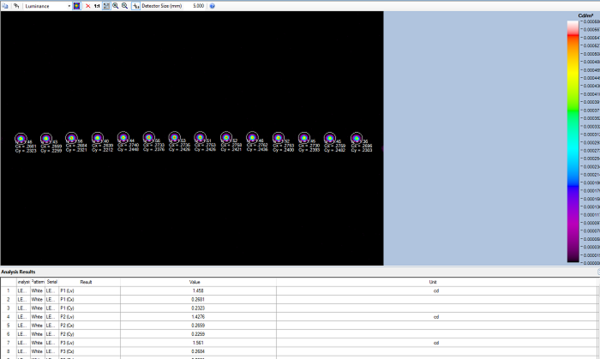The Healing Power of Light: From UV Disinfection to Photodynamic Cancer Treatments
The electromagnetic spectrum of sunlight makes life possible—without it, earth would be a barren, icy ball of rock. From the weather systems that produce our temperate climates to the photosynthesis in plants that yields oxygen and food, light serves many essential functions. Lately, new uses for various wavelengths of light have been discovered or have risen to new prominence in the realms of healthcare, medicine, and well-being. This post will look at some of these beneficial light applications.
Quick Refresher on Light & Color
The entire electromagnetic spectrum encompasses light that is both visible and invisible to the human eye. One way to characterize light is by its wavelength. The spectrum ranges from very energetic gamma rays on one end (short wavelength), all the way to low-energy microwaves and radio waves on the other end (long wavelength). The very small band in the middle of the spectrum is the range of light that is visible to the human eye. Visible light has wavelengths within the range of about 380 nanometers (nm) to 830 nm, bounded by ultraviolet (UV) at the low end of the range and infrared (IR) at the high end.

The top bar shows the full spectrum of electromagnetic radiation, including invisible wavelengths such as X-rays, microwaves, and radio waves, plotted in order of increasing wavelength. The bottom bar is an expanded view of visible light: the narrow range of the electromagnetic spectrum that the human eye can perceive.
Green Light to Ease the Pain
Chronic pain affects more than 100 million Americans and costs as much as $630 billion a year.1 New work by Dr. Mohab Ibrahim, director of the Chronic Pain Management Clinic at Banner-University Medical Center in Tucson, Arizona, offers new hope to these patients—and it doesn’t come from an opioid pill.
In a 25-week clinical study, patients with chronic pain were exposed to ambient, low-intensity green light at the 525 nm wavelength. Patients reported a 60% reduction in pain, particularly those suffering from fibromyalgia, migraines, and interstitial cystitis. The theory is that green light entering the eye activates the body’s nervous system resulting in production of enkephalins, a substance that regulates our sensation of pain and acts on opioid receptors to give relief. An earlier study published in 2016 also showed a beneficial effect of green light in relieving migraines.2

Low-intensity green LED light strip (Image: Source).
Water Purification
In addition to sunlight, another element critical to all living creatures on earth is water; an average human can’t survive for more than 3-4 days without it. But in many places on the planet, having an adequate supply of potable water to meet population needs is a challenge. Even when water is available, it may be brackish, full of sediment, or contaminated with germs and disease.
Luckily, sunlight itself can disinfect and purify water. This effect—called Solar Water Disinfection, or SODIS—is due in part to sunlight’s radiant heat, which can warm up a clear container of water to a temperature of 70-100° Centigrade, hot enough to kill many pathogens. Containers must be made of glass or a non-reactive plastic such as PET.
In addition, UV light has been shown to have a germicidal effect, specifically UV-C light at a wavelength of 254 nm (the UV light range is divided into sub-ranges UV-A, roughly 320 to 400 nm; UV-B, 280 to 320 nm; and UV-C, which covers wavelengths of 200 to 280 nm). The 245-nm wavelength disrupts the DNA in pathogenic microorganisms so they cannot reproduce, thus they are deactivated.3

SODIS application in Indonesia using clear PET plastic beverage bottles (Image from SODIS Eawag, via Creative Commons Unported, CC 3.0)
Blue Light Used in Treatments for Cancer
Blue lasers and LED light have been shown to help treat some cancers without the need for surgery or radiation. Called photodynamic therapy, this new treatment approach combines a drug with light exposure. The drugs only “activate” in the patient’s body when they are exposed to blue light, typically blue LEDs. The method can be effective to treat cancers located on or near the surface of the skin or other areas such where a light can reach within the body.
After a patient ingests the drug, light is applied to the area to be treated, causing the drug to react and form a special kind of oxygen molecule that kills the cancer cells and helps destroy blood vessels that feed the cancer.4 A photodynamic approach (drug + blue light) has also been shown to effectively treat certain pre-cancerous skin conditions.
Red and Blue LEDs for Skin Treatment? The Jury is Still Out
Some experts have been touting the use of red and blue LED lights (at relatively low power levels) for cosmetic health treatments. For example, they say red LED light acts on cells in the skin known as fibroblasts, which play a role in production of collagen, a protein that makes up a large part of connective tissue and helps the skin to recover when it’s harmed.
So, in theory, red light could help to reverse some of the signs related to photoaging in the skin.5 Some studies also suggest that red light may help to restore hair for those with androgenetic alopecia, or male- and female-pattern hair loss.6
Blue LED light is being used by some medical professionals to treat acne. It’s believed that the blue light helps reduce activity in the sebaceous glands, so they produce less oil. “Blue light may also kill acne-causing bacteria known as Cutibacterium acnes. Often blue and red light are used in combination to help fight acne—the blue light targeting the C. acnes and the red light targeting inflammation and redness.”7
There are no definitive studies yet that show these light-based treatments to be more effective than any other treatments currently available for cosmetic uses. More research is needed to confirm the efficacy and long-lasting results.
UV Light for Medical Disinfection
Since the Coronavirus / COVID-19 pandemic emerged, methods of disinfection have become front-page news. Of particular interest are potential applications of UV light for disinfecting air and surfaces. UV-C light waves were already being used to disinfect objects such as laboratory equipment (whose irregular shapes and assembled parts can make it hard to disinfect thoroughly by wiping), and for enclosed spaces such as airplanes and buses.
Previously UV-C light disinfection methods have not been used extensively in hospitals or health care settings, but that is changing rapidly. Studies have not yet proven conclusively that UV-C rays kills the novel coronavirus, but they do kill other related strains of coronavirus such as the one the causes MERS, so the experts say UV-C is “probably” effective on SARS-CoV-2 (COVID-19) as well.8 Both the UV technology and medical industries are now working rapidly on testing UV-C and defining standards disinfection of healthcare settings.
Many companies are manufacturing portable UVC lights that decontaminate areas frequently exposed to viruses. These handheld instruments can be especially useful in vehicles used by hospitals, EMS, police, and fire departments to assist in sterilizing their vehicles.9

UV light array that can be used to help disinfect an operating room or other medical settings.
The idea of using UV light for disinfection has also caught on in other industries, as retail stores, restaurants, and classrooms are considering how to maintain sanitation upon reopening. One technology called “upper room germicidal irradiation” is coming back into vogue, after first emerging in the early 2000s. The technique uses “fixtures mounted on walls or ceilings, similar to fluorescent lights to shine ultraviolet light across the top of an interior space” above people’s heads, with ceiling fans to help draw pathogens up.10
The systems are carefully designed to direct light across the top of a room only and not across any space that humans might inhabit, because direct exposure to UV light can be harmful. Exposure to the UV wavelengths in sunlight is linked to many skin cancers, for example.11
Additionally, “blue light between 400 nm and 500 nm causes photochemical damage to the retina and may lead to degeneration of the macula. The current international Standard IEC 62471 contains guidelines for evaluating the photobiological safety of lamps and lamp systems.”12 These risks mean that any application of UV-based disinfection methods in proximity to humans requires careful usage guidelines and UV light source calibration.
Measuring UV Light Sources
Reliable and accurate measurement of UV LEDs calls for extremely sensitive optical measurement systems for precise radiometric characterization, to ensure effectiveness and help minimize the risk of harm. Measuring the radiant flux is applicable to the spectral range of UV-B and U-VC LEDs for use in healthcare and other settings. These LEDs typically have a comparatively low optical power.
Radiant’s sister company, Konica Minolta Sensing Americas (KM Sensing), has been providing UV measurement instruments for many years and helping to set UV LED calibration standards to address the hazards of blue light. KM Sensing provides an all-in-one system for determining various measurement quantities and tools to verify measurement results. Learn more about UV measurement instruments for both lab and production applications.
Measuring the Visible Spectrum of Light & Color
To measure light in the visible spectrum such as that from red, green or blue LEDs, Radiant provides integrated solutions for both R&D and production-line testing of intensity, illuminance, luminance, and chromaticity.
In the Lab. The physical structure of LEDs is more complex than most lamp sources. Accurate source models produced during the design of an LED-based system enable lighting engineers to achieve the desired performance of their design and verify correct assembly in production.
Radiant’s integrated systems for small light source measurement include an imaging colorimeter and precision goniometer with dedicated software to capture complete and precise data to characterize light source output. This data can then be used for design evaluation and imported into any major optical design package, such as ASAP®, FRED®, LightTools®, LucidShape®, Photopia™, IES TM-25, Opticad®, OSLO®, SimuLux®, SPEOS®, TracePro®, and OpticStudio™ (ZEMAX), as well as general file formats like IES or EULUMDAT.
On the Production Line. LEDs are manufactured to precisely match design specifications for color, luminance, and color temperature. Radiant ProMetric® Imaging Colorimeters and Photometers combine sophisticated optical filters (providing unrivaled match to CIE color-matching functions) with patented ProMetric calibration technology to provide the most accurate, complete measurement data in a single image.
These systems leverage the speed and space-efficiency of a compact image-based system—ideal for high-volume production lines—and are capable of measuring hundreds or thousands of small light sources simultaneously in arrays, on PCBs, or as installed in backlit components like backlight units (BLUs) and LED light strips.

LED light strip characterization shown in Radiant’s TrueTest™ Software
CITATIONS
- Burkhart, F., “In the war on opioids, 525-nm LEDs offer hope”, SPIE News, October 1, 2019.
- Nosedo, R., et al., “Migraine photophobia originating in cone-driven retinal pathways”, Brain, Volume 139 (7): 1971-1986, July 2016.
- Oram, B., “UV Disinfection Drinking Water Treatment”, Water Research Center. (Retrieved June 19, 2020)
- “Getting Photodynamic Therapy”, American Cancer Society. (Retrieved June 18, 2020)
- “LED lights: Are they a cure for your skin woes?” Harvard Health, October, 2019.
- Ibid.
- Ibid.
- “Does ultraviolet (UV) light kill the coronavirus?”, Based on Science, published by The National Academies of Sciences / Engineering / Medicine, April 22, 2020
- “Using UV Light to Kill Bacteria”, Konica Minolta Sensing Americas. (Retrieved June 25, 2020)
- Chang, K., “Scientists Consider Indoor Ultraviolet Light to Zap Coronaviruses in the Air”, The New York Times, May 7, 2020, updated May 21, 2020.
- “Ultraviolet (UV) Radiation”, American Cancer Society. (Retrieved June 19, 2020)
- “Blue Light Safety”, Konica Minolta Sensing Americas. (Retrieved June 25, 2020)
Join Mailing List
Stay up to date on our latest products, blog content, and events.
Join our Mailing List
